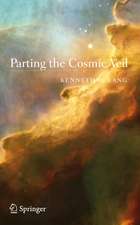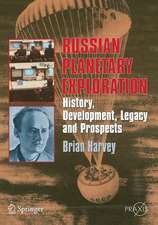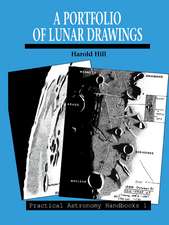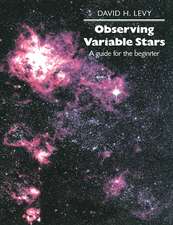Russian Space Probes: Scientific Discoveries and Future Missions: Springer Praxis Books
Autor Brian Harvey, Olga Zakutnyayaen Limba Engleză Paperback – 6 mai 2011
Din seria Springer Praxis Books
-
 Preț: 294.46 lei
Preț: 294.46 lei -
 Preț: 223.45 lei
Preț: 223.45 lei -
 Preț: 193.12 lei
Preț: 193.12 lei -
 Preț: 167.85 lei
Preț: 167.85 lei -
 Preț: 288.98 lei
Preț: 288.98 lei -
 Preț: 323.74 lei
Preț: 323.74 lei -
 Preț: 401.38 lei
Preț: 401.38 lei -
 Preț: 264.12 lei
Preț: 264.12 lei - 8%
 Preț: 513.00 lei
Preț: 513.00 lei -
 Preț: 190.01 lei
Preț: 190.01 lei -
 Preț: 218.16 lei
Preț: 218.16 lei -
 Preț: 312.06 lei
Preț: 312.06 lei - 17%
 Preț: 414.05 lei
Preț: 414.05 lei -
 Preț: 216.41 lei
Preț: 216.41 lei -
 Preț: 262.27 lei
Preț: 262.27 lei -
 Preț: 264.35 lei
Preț: 264.35 lei -
 Preț: 167.63 lei
Preț: 167.63 lei -
 Preț: 284.81 lei
Preț: 284.81 lei -
 Preț: 259.08 lei
Preț: 259.08 lei -
 Preț: 305.47 lei
Preț: 305.47 lei -
 Preț: 244.14 lei
Preț: 244.14 lei -
 Preț: 227.85 lei
Preț: 227.85 lei -
 Preț: 285.25 lei
Preț: 285.25 lei -
 Preț: 295.56 lei
Preț: 295.56 lei -
 Preț: 357.17 lei
Preț: 357.17 lei -
 Preț: 275.79 lei
Preț: 275.79 lei -
 Preț: 257.08 lei
Preț: 257.08 lei -
 Preț: 349.71 lei
Preț: 349.71 lei -
 Preț: 272.45 lei
Preț: 272.45 lei -
 Preț: 270.27 lei
Preț: 270.27 lei - 8%
 Preț: 456.51 lei
Preț: 456.51 lei -
 Preț: 352.34 lei
Preț: 352.34 lei - 8%
 Preț: 394.80 lei
Preț: 394.80 lei -
 Preț: 320.65 lei
Preț: 320.65 lei -
 Preț: 325.29 lei
Preț: 325.29 lei -
 Preț: 253.11 lei
Preț: 253.11 lei -
 Preț: 192.86 lei
Preț: 192.86 lei -
 Preț: 313.40 lei
Preț: 313.40 lei -
 Preț: 150.51 lei
Preț: 150.51 lei -
 Preț: 233.34 lei
Preț: 233.34 lei -
 Preț: 286.78 lei
Preț: 286.78 lei -
 Preț: 212.01 lei
Preț: 212.01 lei -
 Preț: 366.83 lei
Preț: 366.83 lei -
 Preț: 299.99 lei
Preț: 299.99 lei -
 Preț: 232.27 lei
Preț: 232.27 lei -
 Preț: 284.58 lei
Preț: 284.58 lei -
 Preț: 212.45 lei
Preț: 212.45 lei -
 Preț: 159.81 lei
Preț: 159.81 lei -
 Preț: 349.48 lei
Preț: 349.48 lei - 20%
 Preț: 2061.64 lei
Preț: 2061.64 lei
Preț: 301.10 lei
Nou
Puncte Express: 452
Preț estimativ în valută:
57.62€ • 62.57$ • 48.40£
57.62€ • 62.57$ • 48.40£
Carte disponibilă
Livrare economică 01-15 aprilie
Preluare comenzi: 021 569.72.76
Specificații
ISBN-13: 9781441981493
ISBN-10: 1441981497
Pagini: 544
Ilustrații: XXIX, 514 p.
Dimensiuni: 170 x 240 x 29 mm
Greutate: 0.89 kg
Ediția:2011
Editura: Praxis
Colecția Praxis
Seriile Springer Praxis Books, Space Exploration
Locul publicării:New York, NY, United States
ISBN-10: 1441981497
Pagini: 544
Ilustrații: XXIX, 514 p.
Dimensiuni: 170 x 240 x 29 mm
Greutate: 0.89 kg
Ediția:2011
Editura: Praxis
Colecția Praxis
Seriile Springer Praxis Books, Space Exploration
Locul publicării:New York, NY, United States
Public țintă
Popular/generalCuprins
Introduction by the authors.- Acknowledgments.- Glossary.- Terminological and translation notes.- Reference notes.- List of tables.- List of illustrations.- List of figures.- Chapter 1: Early space science.- Chapter 2: Deepening our understanding.- Chapter 3: Revealing the Moon.- Chapter 4: Unveiling Venus.- Chapter 5: The path to Mars.- Chapter 6: Orbiting space stations.- Chapter 7: Later Soviet space science: the observatories.- Chapter 8: Perspectives, past, and future.- Annex: Summary of Soviet and Russian space science missions.- Bibliography.- Index.
Recenzii
From the reviews:
“This well-researched book begins with a discussion of early Soviet balloon flights, followed by coverage of the Sputnik era and the Soviet lunar, Venus, and Mars probes. Harvey … and Zakutnyaya, a science journalist, provide good descriptions of numerous Soviet experiments related to space biology and materials science. … Overall, the book provides an excellent account of the extensive scientific results/accomplishments of Soviet space programs. … An important contribution to the history of space science. Summing Up: Highly recommended. All readers.” (A. M. Strauss, Choice, Vol. 49 (3), November, 2011)
“The country’s descent from technological and scientific dominance is clearly demonstrated by this book, which summarizes in considerable depth the scientific missions and discoveries made by the former Soviet Union. … the entire book is taken up with descriptions of scientific endeavours undertaken during the 1960s and 1970s. … This well-researched volume provides a valuable account of many experiments and missions which have previously been poorly documented in the West.” (Peter Bond, The Observatory, Vol. 132 (1227), April, 2012)
“This well-researched book begins with a discussion of early Soviet balloon flights, followed by coverage of the Sputnik era and the Soviet lunar, Venus, and Mars probes. Harvey … and Zakutnyaya, a science journalist, provide good descriptions of numerous Soviet experiments related to space biology and materials science. … Overall, the book provides an excellent account of the extensive scientific results/accomplishments of Soviet space programs. … An important contribution to the history of space science. Summing Up: Highly recommended. All readers.” (A. M. Strauss, Choice, Vol. 49 (3), November, 2011)
“The country’s descent from technological and scientific dominance is clearly demonstrated by this book, which summarizes in considerable depth the scientific missions and discoveries made by the former Soviet Union. … the entire book is taken up with descriptions of scientific endeavours undertaken during the 1960s and 1970s. … This well-researched volume provides a valuable account of many experiments and missions which have previously been poorly documented in the West.” (Peter Bond, The Observatory, Vol. 132 (1227), April, 2012)
Notă biografică
Brian Harvey is an established Praxis author of many books in the Springer-Praxis Space Exploration program on the Russian, Chinese, Indian, Japanese, European space programs. He was the Editor of the Space Exploration 2007 annual and is Joint Editor of the following annual, due in September 2007: Space Exploration 2008. Brian has written many articles for 'Spaceflight' magazine, 'Orbit', 'Astronomy and Space' and the Journal of the British Interplanetary Society and regularly broadcasts on spaceflight for RTE, the BBC and the Canadian Broadcasting Corporation. Dr. Olga Zakutnyaya studied journalism at Novosibirsk State University and Lomonosov Moscow State University. Since 2003 she has been working as a science journalist for various editions, mainly freelance. In 2008 she acquired the Ph.D. in philolohu. She has been working as an assistant to the head of the Public Relations department of the Space Research Institute of the Russian Academy of Sciences (IKI).
Textul de pe ultima copertă
The Soviet Union began the exploration of space with the launch of Sputnik in 1957, well over 50 years ago, and sent the first probes to the Moon, Mars, and Venus. Less well known is what these probes actually found out. What were the discoveries of Russian space science? What new discoveries may we expect in the future? Who were Russia's most important scientists? Russian Space Probes gives for the first time the definitive history of Soviet-Russian space science, and is the first book to assess the actual achievements of the Russian space program in furthering our knowledge of the Solar System. Among other projects covered are missions such as Elektron, which mapped the Earth's radiation belts; the astrophysical observatories Astron, Kvant, Gamma, and Granat; Proton, which trapped cosmic rays; Prognoz, which measured solar radiation; and the Interball, Aktivny, APEX, and Magion mission in which satellites chased each other in the Earth's magnetic tail. The final part of the bookexamines the future of Russian space science and looks at planned new missions, such as the Spektr series of space observatories, and return flights to the Moon and Mars, including a sample of Phobos.
Caracteristici
A definitive history of Russian unmanned space science program from 1957 (Sputnik) on Examines Russian contributions to our knowledge of Earth, the Moon, Mars, Venus, and the environment of space Compares Russian achievements with those of the rest of the world and analyzes the results of those achievements Includes supplementary material: sn.pub/extras

























